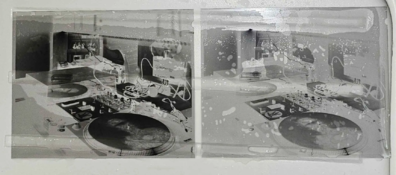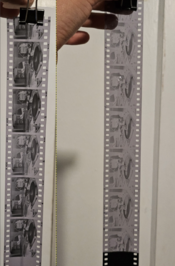PicklesFrog
Member
Hey all.
I was reading the Darkroom Cookbook and i stumbled upon divided d-23. I really like d-23 so i decided to give it a shot with the 4.5g sodium carbonate per 500mL in solution b (as i like contrast).
However, when doing the solution a for 3 minutes and b for 3 minutes, my negative came out thin vs my normal d-23 development. Used Catlabs X Film 80 rated at 80 iso.
Did i do anything wrong? Or is that just a jumping point to where i should go next? Rather, has anyone worked with divided d-23 and give me any ideas to make my experience better? Attached are my two negatives. Left is normal d-23 development at 9 minutes, while right is the 3 minute solution a constant agitation and 3 minute solution b with 5 second agitation every 30 seconds. Sorry for the crude pic, I just needed to see the results after washing.
Thanks
I was reading the Darkroom Cookbook and i stumbled upon divided d-23. I really like d-23 so i decided to give it a shot with the 4.5g sodium carbonate per 500mL in solution b (as i like contrast).
However, when doing the solution a for 3 minutes and b for 3 minutes, my negative came out thin vs my normal d-23 development. Used Catlabs X Film 80 rated at 80 iso.
Did i do anything wrong? Or is that just a jumping point to where i should go next? Rather, has anyone worked with divided d-23 and give me any ideas to make my experience better? Attached are my two negatives. Left is normal d-23 development at 9 minutes, while right is the 3 minute solution a constant agitation and 3 minute solution b with 5 second agitation every 30 seconds. Sorry for the crude pic, I just needed to see the results after washing.
Thanks















